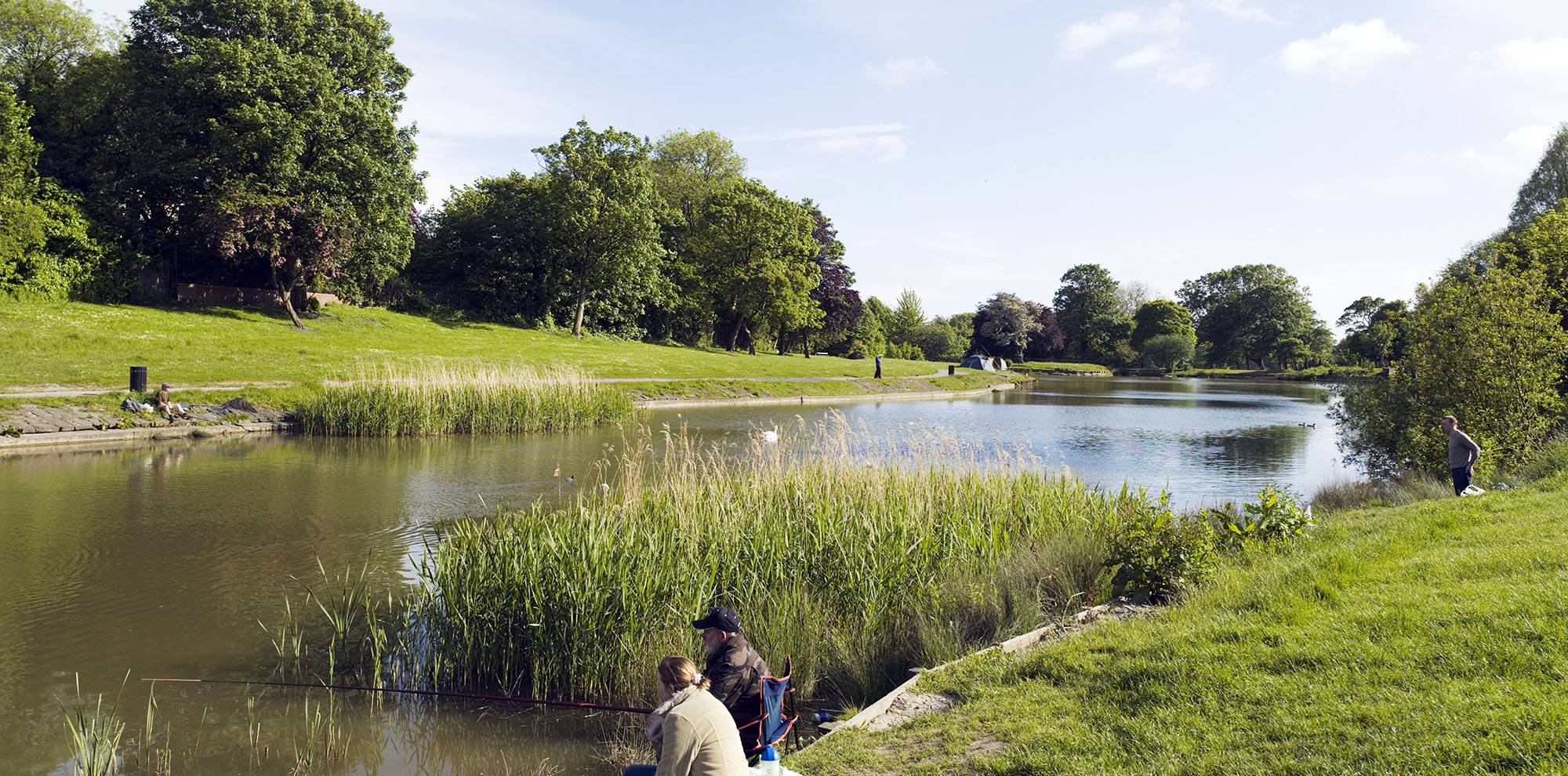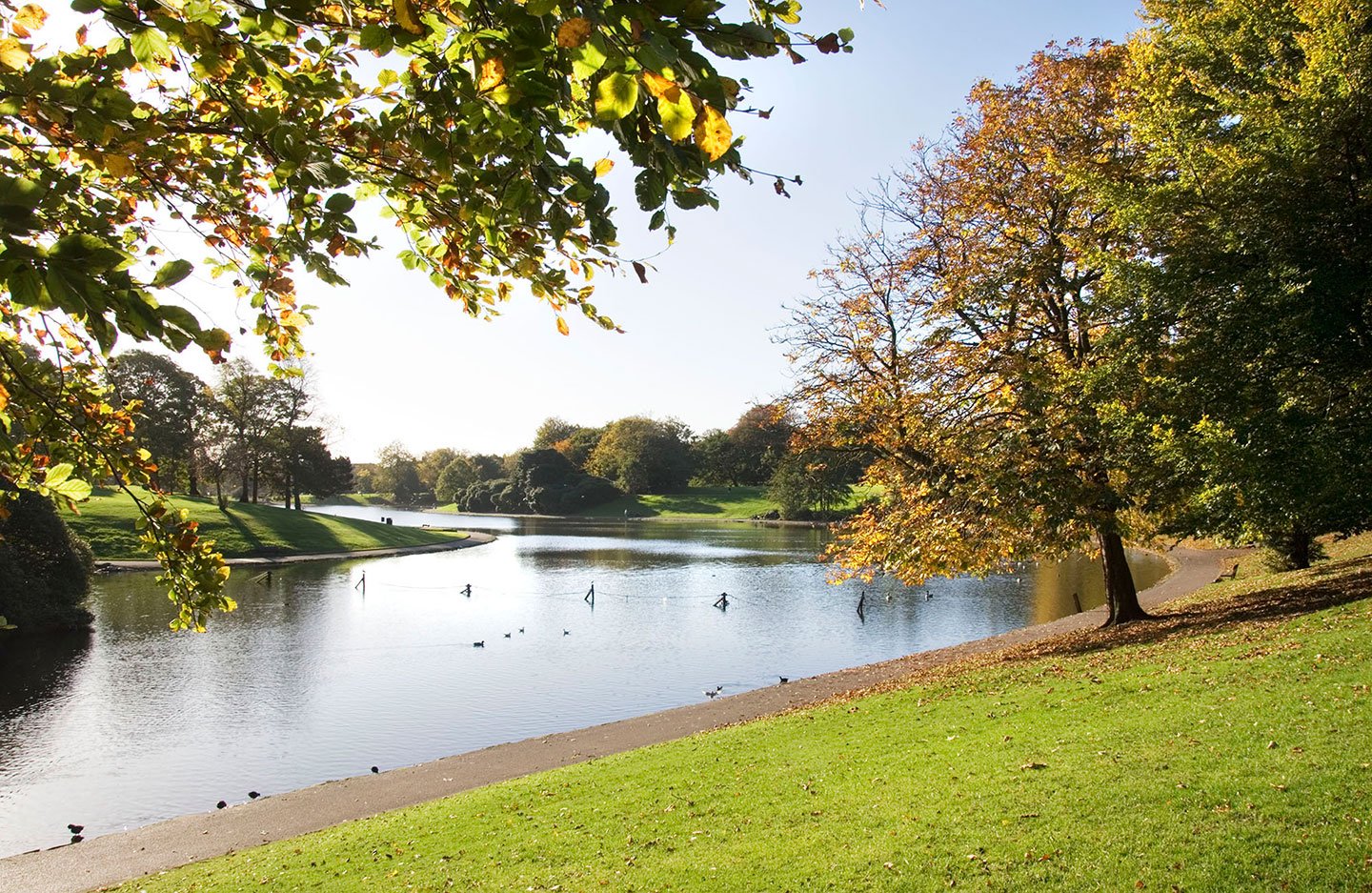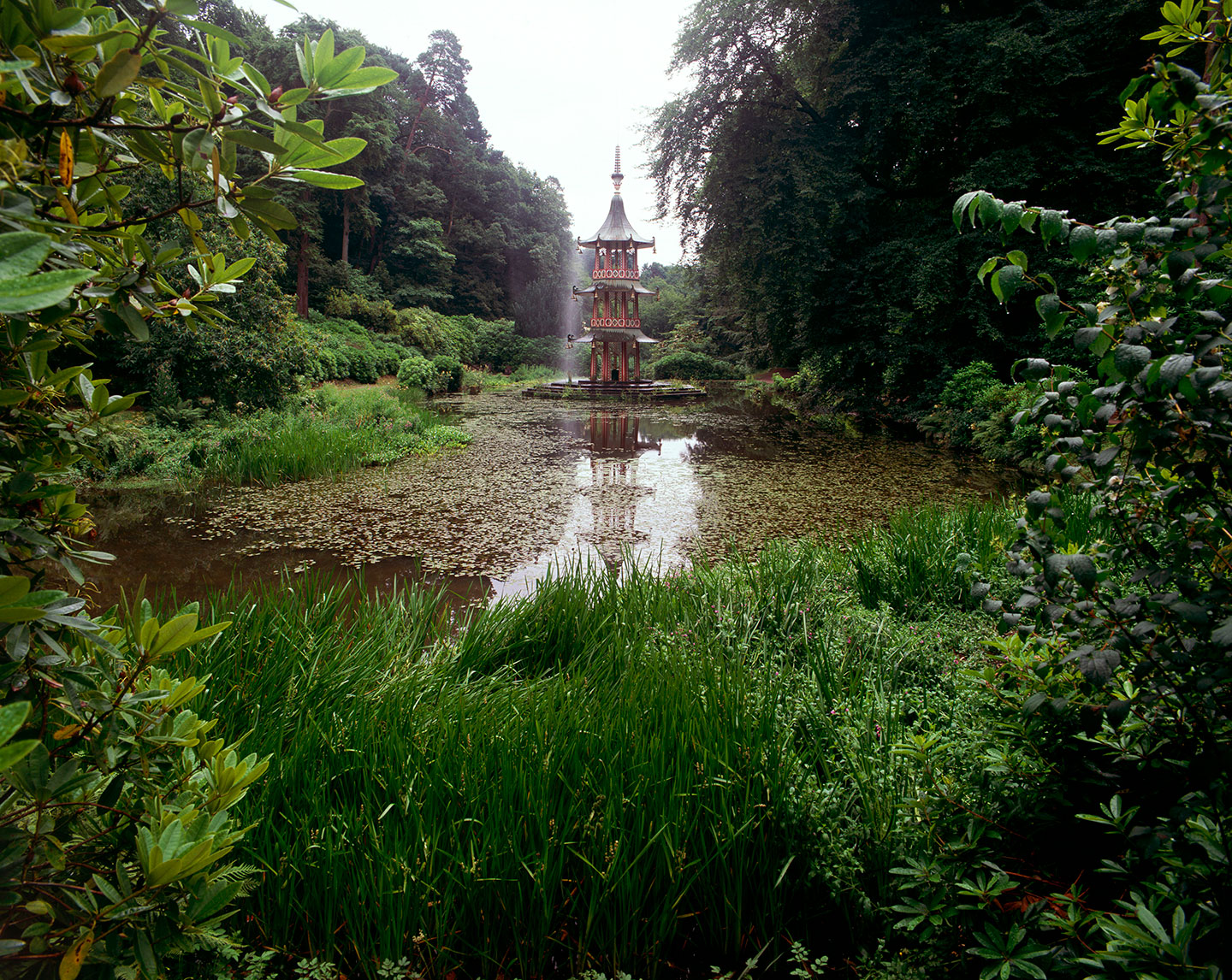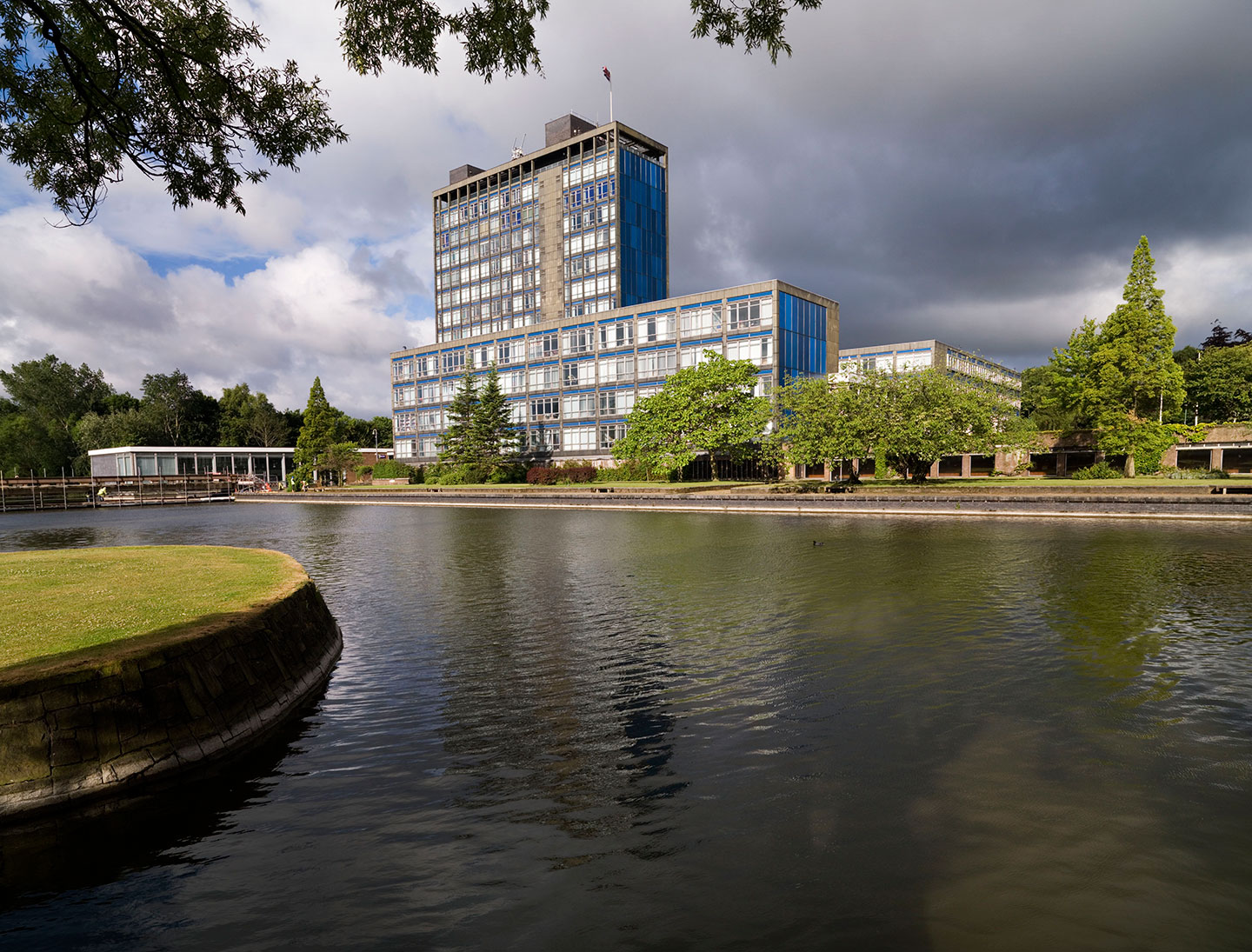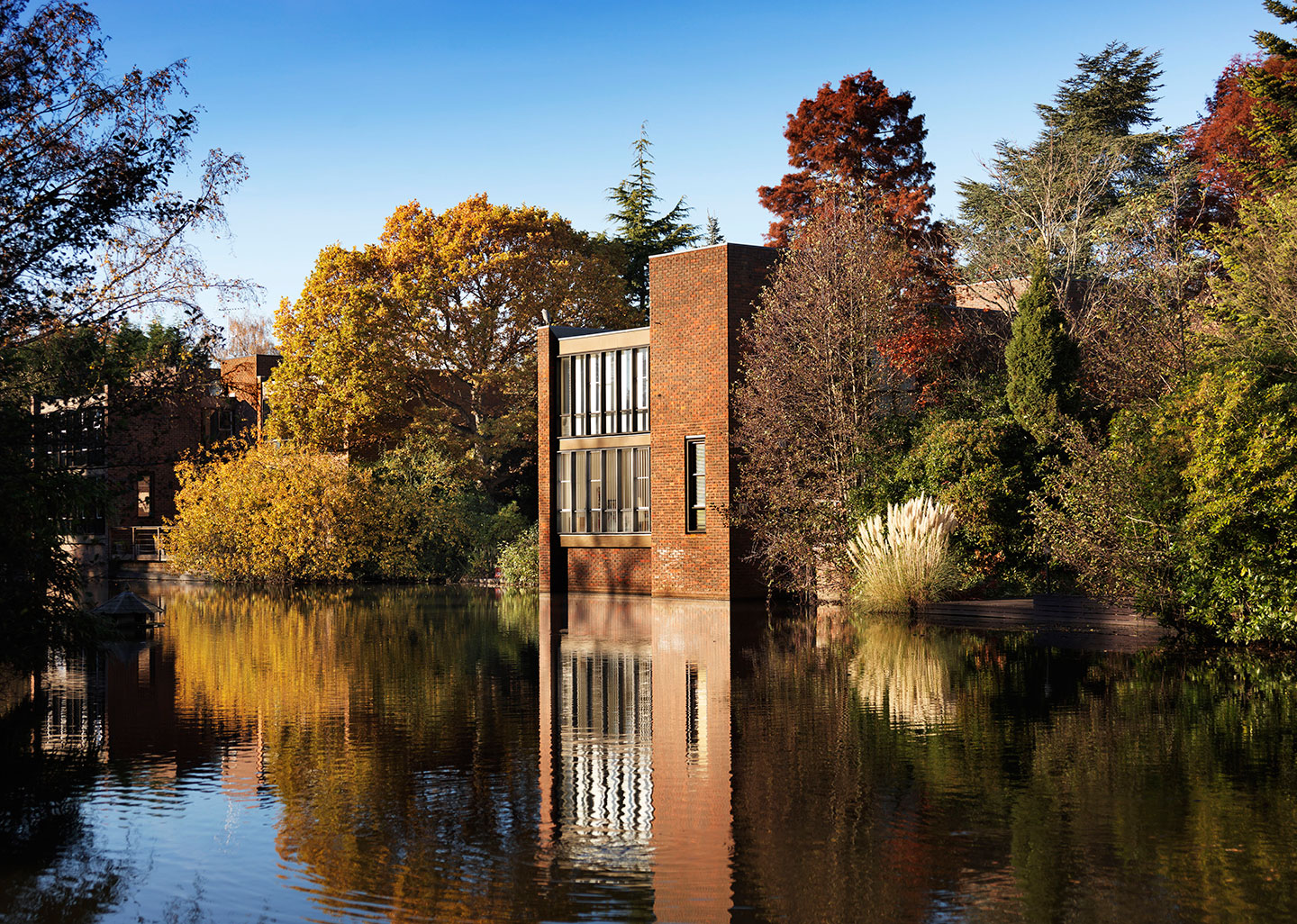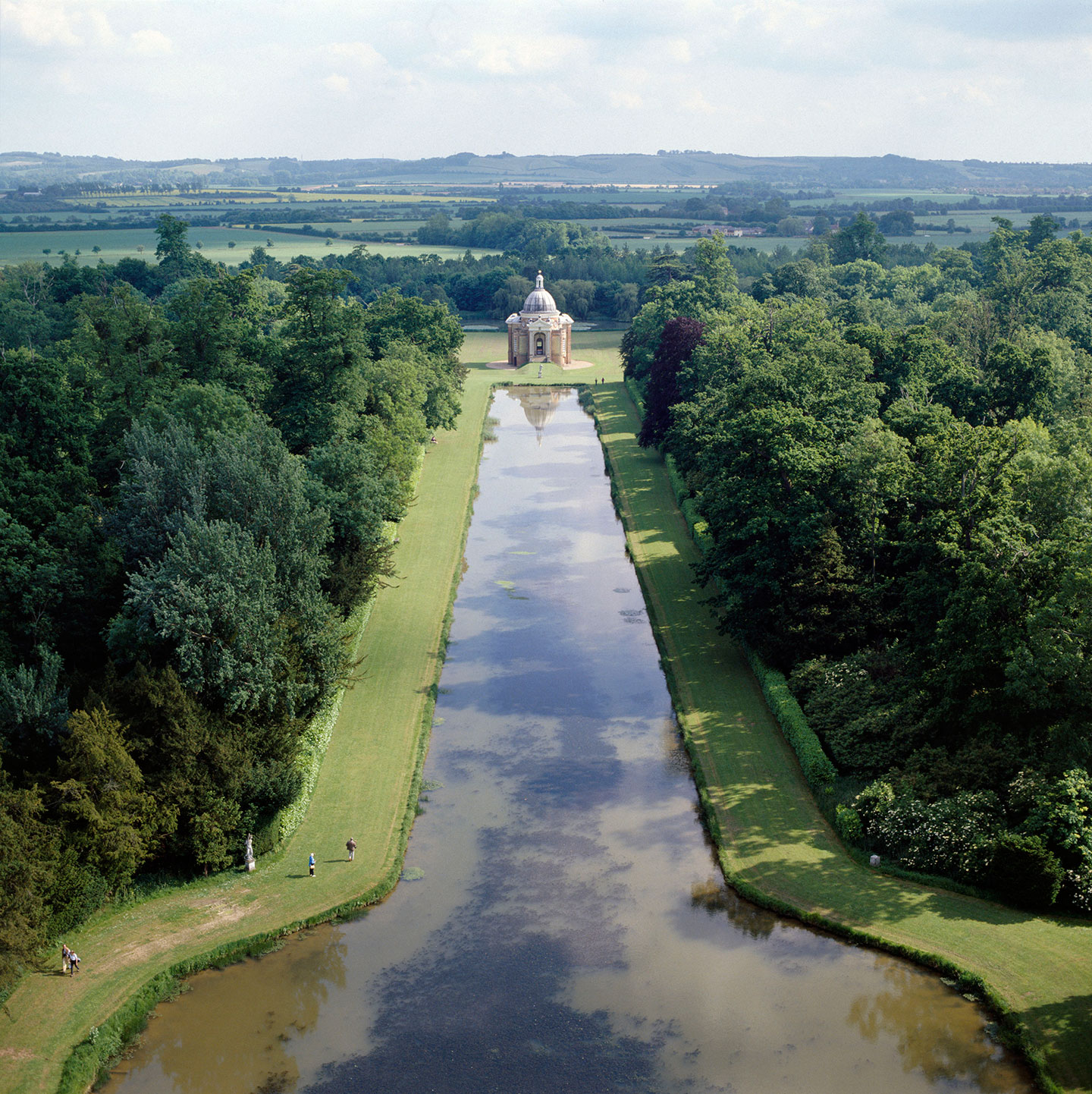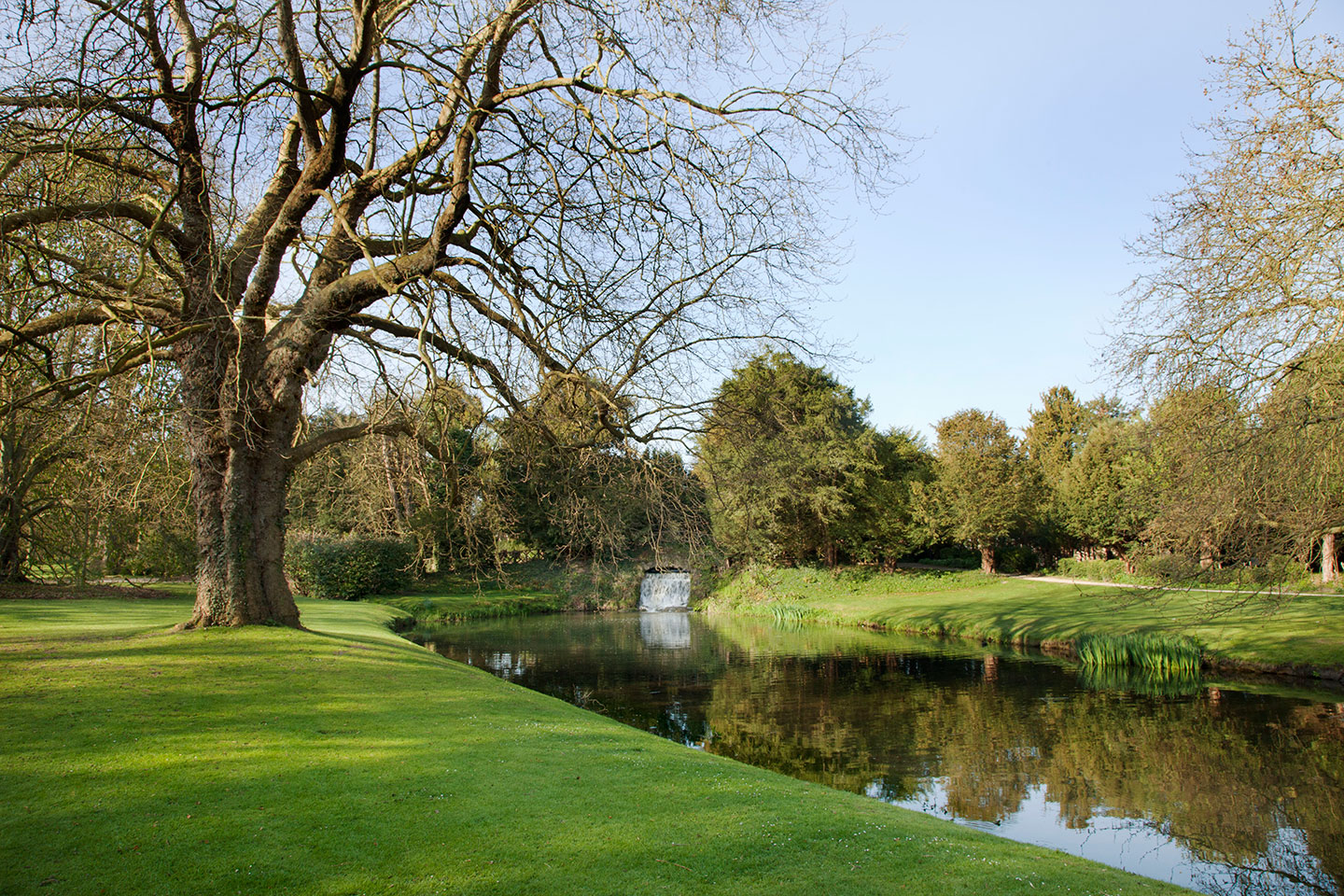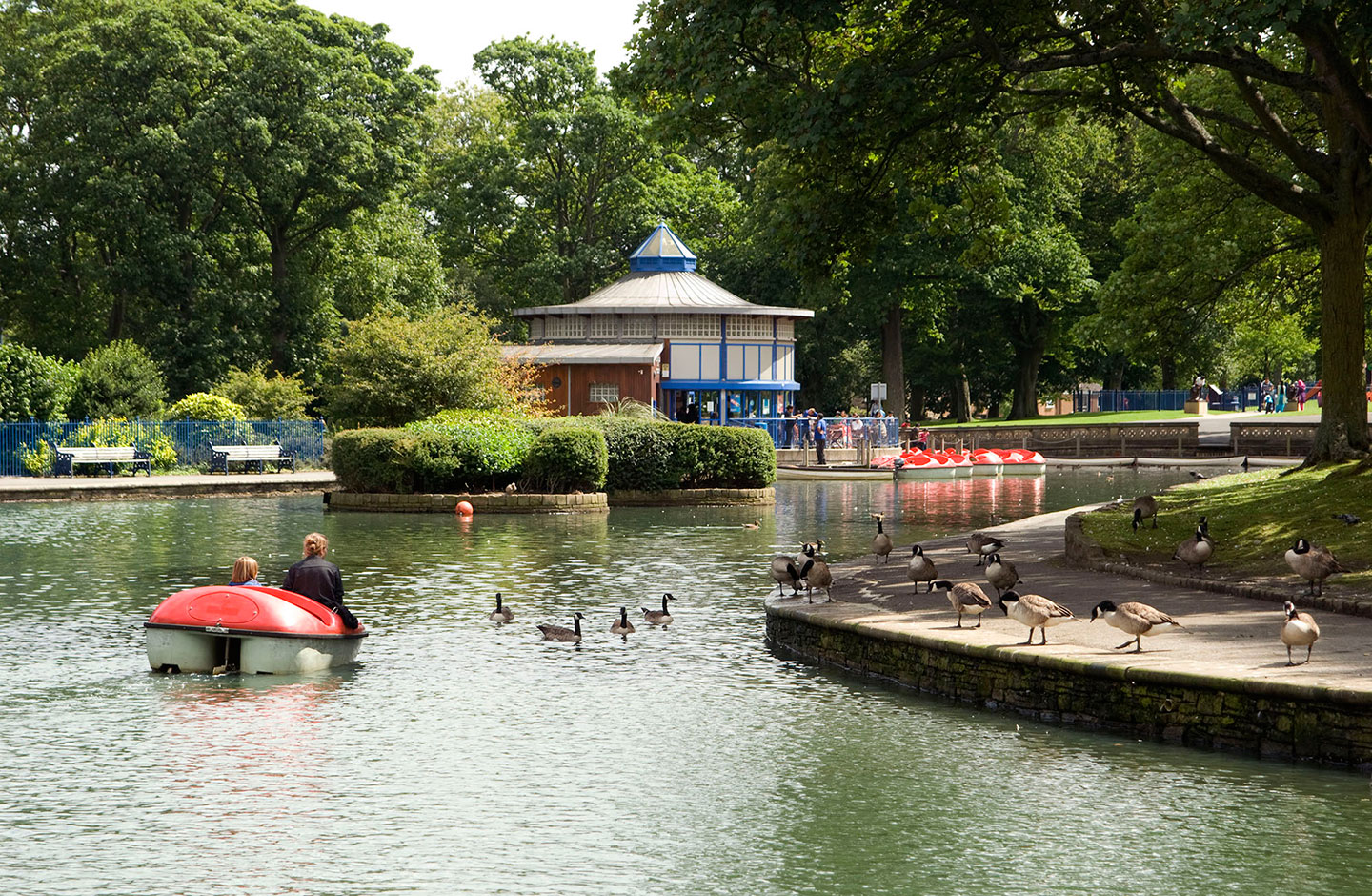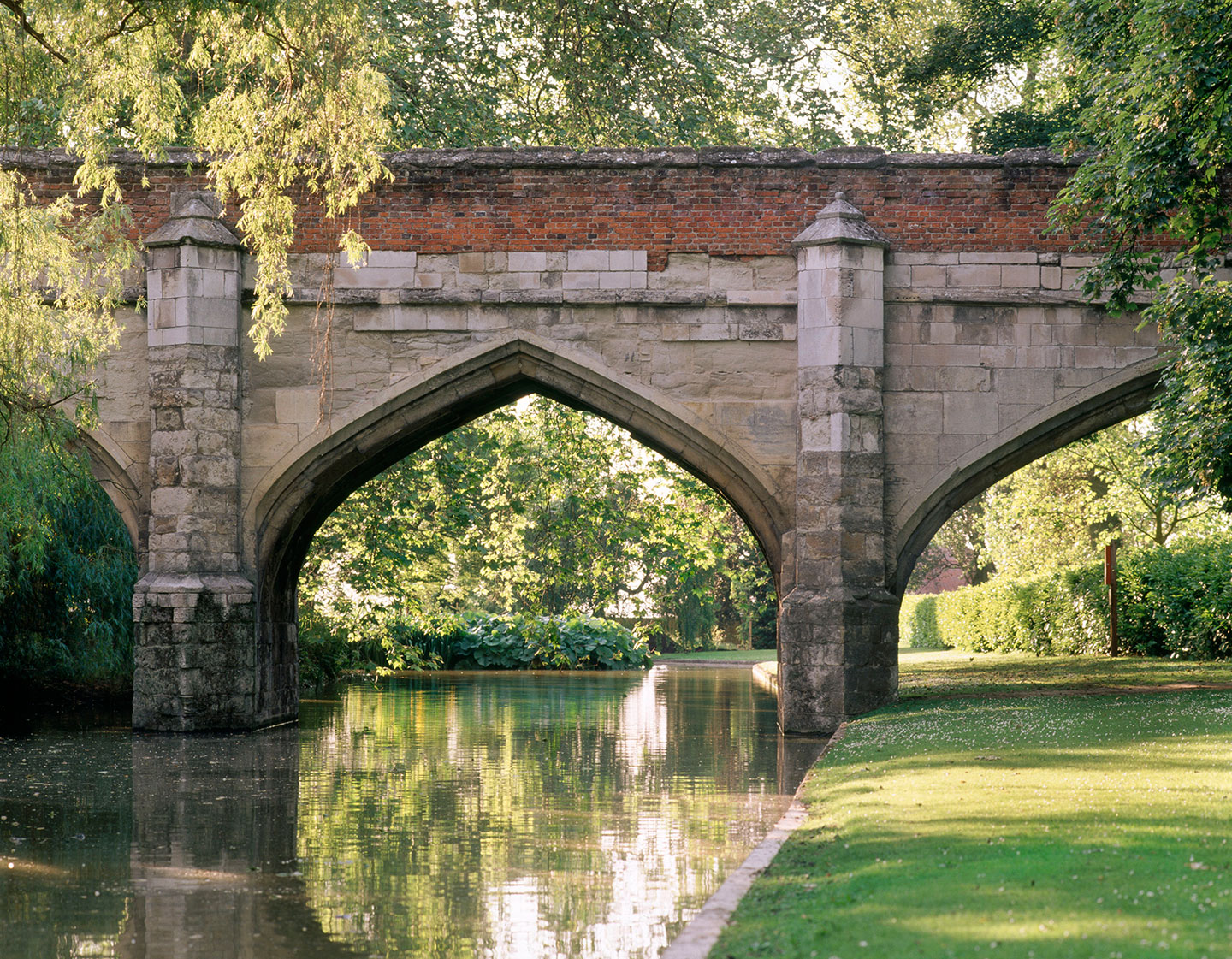Lakes and Water Features
Lakes are often the major design feature of historic parks and gardens. The care and management of these features is often complex and costly. Specialist advice is often needed.
Lakes and water features image gallery
Please click on the gallery images to enlarge.
Reservoirs Act and owners’ statutory safety responsibilities
Owners of large lakes and other large, impounded water bodies (like moats) with a volume of 25,000m³ or more have statutory safety responsibilities under the Reservoirs Act 1975 and the Flood and Water Management Act 2010, as a flood caused by the failure of a dam could result in loss of life or damage to property. This section helps you find guidance on reservoir safety:
- The Environment Agency Register of Reservoirs
- Panel Engineers and Planning Safety Works
- Permissions and Consents
- Incidents of Failure
- Flood Plans and Maps
In July 2022, Defra published its plans to strengthen and modernise reservoir safety legislation. The threshold will be tightened to 10,000m³ and owners will have to register these smaller 10,000-25,000m³ impounded water bodies, referred to as 'small raised reservoirs', too.
Reservoir Safety Reform Programme
The Environment Agency is developing and delivering the Reservoir Safety Reform Programme in response to the Independent Reservoir Safety Review Report, led by Professor David Balmforth. The programme will be delivered in phases over several years.
If you believe you have a small, raised reservoir, they invite owners and occupiers to complete a voluntary survey to help the programme identify small, raised reservoirs across England.
Further information and updates are available on the programme’s information page.
All property owners have statutory duties for the safety of others under legislation such as the Health and Safety at Work (etc.) Act 1974 and the Building Act 1984; they should ensure lakes, dams and other features are maintained and (where required) also prepare flood plans and maps. Further guidance is available in Reservoirs: owner and operator requirements.
The Environment Agency’s Register of Reservoirs
Large lakes 25,000m³ or over are technically called ‘large raised reservoirs’ and the owners or managers are called ‘undertakers’. The Environment Agency is responsible for reservoir safety; all lakes 25,000m³ or over must be registered with them and guidance is provided. They calculate the volume as the water storage capacity above the natural level of any part of the surrounding land. The volume includes the greatest level of water and silt that would escape if the dam failed.
The Environment Agency determines the risk status of each registered reservoir and notifies the undertaker. They take into account the likely loss of life, and the damage to property and infrastructure if the reservoir failed.
Panel engineers and planning safety works
Every undertaker of a reservoir 25,000m³ or more has to appoint a specialist engineer from Defra’s Reservoir Panel to supervise the reservoir and its dam. There are three types:
- Construction engineer
- Supervising engineer
- Inspecting engineer
Undertakers of high-risk reservoirs will need to appoint both a supervising engineer and an inspecting engineer. A construction engineer will be needed if alterations are to be made to the reservoir.
The undertaker’s choice of panel engineer is an important one. It is the undertaker’s responsibility to ensure the engineer is appropriately qualified and the qualification is still valid. Research into the work experience of individual engineers can be useful. For example, an engineer familiar with working in historic parks and gardens may be more sensitive to the impact of engineering works on the surrounding landscape. References could be sought from the owners of similar structures or from the local water authority reservoir safety manager.
Any maintenance and safety measures recommended by the engineer will be legally binding and the undertaker has a limited time period to complete these recommendations. It is vital that the undertaker studies the engineer’s draft report. This is the only opportunity to negotiate or seek clarification on the measures to be taken in the interests of safety. There is also an opportunity to obtain a second opinion from another panel engineer as a 'referee'. The Institution of Civil Engineers publishes more detailed guidance. See the 'External Links' section below.
The works may be minimal and just involve more rigorous maintenance schedules for structures and surrounding vegetation. If structures are below standard, then engineering works to the structures or the dam may be required. Such modifications could have serious impacts for the historic features like dams and their landscape settings therefore engineers need to be fully briefed about the historic park and garden and its water features, structures and archaeological interest. There will be other interests like wildlife which also have to be considered.
Conservation management plans can be useful in helping to brief the engineers about the historic significance of the water features.
Permissions and consents
No alteration, removal or replacement of lakes, dams and spillways may be made without the written consent of the Environment Agency.
Work on dams and related structures is likely to require planning permission too. If structures are listed or scheduled, listed building consent or scheduled monument consent and other permissions may also be necessary. The timing for such applications could be critical as undertakers will have a limited period to complete statutory required works. Ideally, undertakers should involve the local authority early on in any inspections especially if the park and garden is registered or any related listed structures like dams, spillways, weirs, pump houses, valve houses, bridges, fountains, boat houses and garden buildings are listed or scheduled. Historic England’s advice should be sought if the structures are scheduled, listed or registered Grade I or II*, or where demolition of a Grade II listed building is proposed, by contacting the relevant Local Office.
The local planning authority and Historic England advisers will need sufficient information from the undertaker in order to understand the impacts of the proposed changes for the historic structures and features.
There may be other designations to be considered such as tree preservation orders or wildlife regulations such as bat roosts (in trees or chambers) or nesting birds and badgers. Undertakers should seek advice from Natural England.
In developing work plans for the necessary works, advice from specialists such as landscape architects and archaeologists, and tree professionals is likely to be desirable.
Incidents of failure
Undertakers are required to report all incidents of failure or potential failure of large raised reservoirs to the Environment Agency’s incident line. Examples of incidents include water going over the top of the dam (‘overtopping’), a leak, slope instability, cracks in the dam, indications of abnormal movement in the dam, material failure (such as a landslip down an embankment of a dam), or pollution.
Emergency flood plans and maps
As of April 2021, undertakers are legally required to prepare on-site plans so they can respond to emergencies. Defra provides guidance and a template. Undertakers need to consult with an appointed engineer and the plan needs to be certified by the engineer. It is good practice for the flood plan to be developed in conjunction with the local authority or local resilience forums off-site flood plan.
Climate change issues and the need for further changes to reservoir regulation
Environment Agency research shows that dams with earth embankments are likely to be vulnerable to climate change through increased erosion, extreme fluctuations in water levels, changes in vegetation and prolonged drying during hot weather. Overflow structures and spillways may be vulnerable as the frequency and magnitude of flows increases.
The National Flood and Coastal Erosion Risk Management Strategy for England addresses reservoir regulation and what needs to happen next. The Environment Agency is also implementing the reservoir safety regulation recommendations from the government’s independent review into the Toddbrook Dam failure in 2019. The Environment Agency will be updating guidelines for reservoir owners and operators of high risk reservoirs to ensure they continue to be resilient to extreme flood events and climate change. Further information is available on the Reservoir Safety Reform Programme Information page.
Lake design and construction
Across the centuries the design of water features has shaped gardens. Water has been used in many ways from creating moods to defining scale, lines of sight and boundaries. Playing water brings life and movement, and still expanses like lakes create a sense of space and unity. Water can be used to flow and direct the reading and experience of the landscape, create surprises, or provide a grand stage.
Many of the lakes, ponds and pools in parks and gardens also served to provide a supply of fish, wildfowl and ice for the table. They were also used for recreational fishing and boating.
Sometimes the making of lakes pools and canals not only served to create an attractive garden feature but also to sort out poorly draining land or flooding, and to improve the land for farming.
The majority of lakes in historic parks and gardens are formed by earth embankment dams that block the natural flow of a river or drainage from an area and impound the water. Sometimes ‘on-line’ is used to describe this system. Occasionally lakes are non-impounding where the water is held by banks all the way round and water needs to be pumped or piped in.
Impounded lake water levels are usually raised to disguise the upstream face of the dam. The crest is often hidden too by adjacent planting to add to the illusion of a natural feature. The dam’s downstream face and spillway are designed to lead into a different and contrasting landscape of rushing water after the serenity of the still lake.
The lakeside margins are likely to have been carefully shaped and planted but over time they may have been eroded by cattle and animals, or wave action, or become overgrown with scrubby trees.
The presentation of the water margins, the dam and its spillway or overflow are important in evoking the historic design.
Wildlife interest and waterfowl
Natural England estimates there are approximately 6,000 lakes in England over one hectare in size and about six per cent of these are designated as Sites of Special Scientific Interest. Others are of county or local wildlife interest. Aside important areas like the Lake District, the Norfolk Broads and the meres and mosses in the West Midlands, the lakes created by landscape designers like Lancelot ’Capability’ Brown (1716 to 1783) from the 18th century onwards are probably amongst the largest open water habitats in the countryside and urban areas. Although artificial, these lakes can have similar physical, chemical and biological properties to natural features and therefore they are of wildlife conservation value too. Lakes, ponds and watercourses that link up also offer corridors for wildlife to move around.
Waterfowl
Waterfowl add life and interest to lakes and water features. They are popular attractions in public parks. Ornamental waterfowl may have a long association with a site and its development as a designed landscape. Birds like Canada Geese were introduced in the 17th century and there have been many other introductions since. For example the famous pelicans at St James’ Park were first introduced in 1664. They were a gift from the Russian Ambassador. The Regent's Park waterfowl collection was started in the 1930s and now there are over ninety species of swans, geese and ducks.
In some situations non-native waterfowl can cause problems. The number of Canada geese has rapidly increased over the past 70 years and sometimes large flocks can cause significant damage at historic sites. They damage or trample vegetation, and the accumulation of droppings can be a problem.
All wild birds are protected by law so it is important that you follow the statutory guidance. Any management strategy to control Canada geese numbers is likely to require more than one action and take several years to implement. Management strategies need to take into account the life cycle of the Canada geese, and other wildlife. Management steps to consider include:
- Discouraging feeding of the Canada geese by visitors
- Changing the grass mowing regime. Canada geese prefer short grass
- Changing the grass mix to coarser grasses
- Planting up water edges or breaking up grassy areas with taller plants
- Landscaping or fencing to prevent the Canada geese gaining access
- The repeated use of visual or acoustic bird scares. There are also chemical repellents
Under licence you can also:
- Oil Canada geese eggs to prevent them hatching. Their nests are usually close to water bodies, often on islands which provide some protection from predators such as foxes and dogs. The Canada geese lay a single clutch of six eggs in early April and these take about 28-30 days to hatch. Canada geese are aggressive and will fiercely defend their nests and young.
- Round up and cull Canada geese during their moult at end of June when they are flightless for three to four weeks.
Natural England’s 2015 guidance on ‘Geese: control populations of problem birds under licence’ sets out how geese numbers can be controlled. Our web page on Bird Deterrents also provides additional general advice.
Fishponds and Duck Decoys
Freshwater fish ponds were created to produce and store fish to eat. The earliest ponds date back to Roman times. Similarly, duck decoys were designed to trap and kill wild ducks for the table. Fish ponds and duck decoys still survive in some historic parks, and some are scheduled as historic monuments. Andrew Heaton’s 2016 paper in British Wildlife (Volume 27 Number 3) offers more insights into the history of decoys, their designs and how they operated. Fishponds and duck decoys are often important for wildlife too.
Archaeological features and water meadows
Some features in historic parks and gardens like pools, moats, mill ponds and industrial processing water systems may date from much earlier phases of the landscape. Early water gardens also survive. The silts in these water bodies may be of archaeological interest. They are likely to be of historic and archaeological interest. Any clearance or restoration work needs to be undertaken carefully so that the original shape, profile and characteristics are not damaged or lost. The silts in these artificial water bodies may also be of archaeological and palaeoecological value. These remains can reveal information on past activities, environments and environmental change. Advice should be sought form Historic England’s Science Advisors.
Water meadows
Water meadows are an important part of our cultural and agricultural heritage. Most fell out of use from the late 19th century onwards and working examples are extremely rare today. The exceptions are the handful of examples which have been the subject of restoration schemes initiated by individuals and trusts, usually with the aid of agri-environment schemes. Redundant water meadows are far more common, and their remains are an important part of the countryside character in some areas, like the chalk river valleys in central southern England.
Restoring lakes
Lakes require regular maintenance otherwise they become silted-up and invaded by scrub and trees. Their design and biodiversity value becomes increasingly diminished. Even where maintenance has been neglected for many decades, lakes can be restored to reveal the original landscape design. The work needs to be planned carefully, and permissions sought, as it is costly.
Understanding the design role of the water feature in the landscape design and its historic significance is essential if it is to be appropriately managed and presented. Archive research, surveys and archaeological investigations can help reveal the original design character, water levels and lost features like edging. For example, the water levels and open waterside will be critical for lakes intended to reflect the landscape and the sky. In other lakes, new fountains and jets could be designed to help the aeration of the water as well as create a spectacle. Project planning needs to establish priorities for each aspect of restoration work and likely costs. For example, there will be little point in repairing margins and controlling vegetation if the dam is in need of costly repairs.
Conservation management plans are useful tools for working out the original design, the evolution of the landscape and how to restore features such as lakes. A plan for a lake will probably need to address the conservation and long-term management, including climate change impacts of:
- Water levels
- Water flow, supply and controls and wider water catchment issues
- Water quality, pollution and run-off issues
- Bankside and water margin vegetation, and trees
- Views and vistas
- Wildlife
- Invasive non-native species
Natural England’s Climate Change Adaptation Manual includes guidance on standing open water and adaptation responses for both the catchment and the water body. The historic significance of sites needs to shape adaptation responses however plans should consider the six options set out by Natural England:
- Manage pollutant loads from effluents to minimise impacts on the natural nutrient status and to minimise concentrations of toxins
- Maintain or restore lake marginal habitat and emergent structure to provide areas protected from wave action
- Maintain or restore the natural hydrological regime including action that reduces drainage of surrounding wetlands and allows natural water level fluctuations and flushing rates
- Optimise shoreline tree cover to provide some areas of shade. While shading reduces plant growth in standing waters, an ample supply of woody debris and leaf litter is beneficial to some species, and buffers against rising water temperatures, and therefore a limited amount of shade is beneficial
- Manage access and leisure activities to minimise impacts and increase resilience
- Promote good biosecurity to slow the spread of invasive non-native species and minimise their chances of colonising the water body and control damaging species already present
Dams, spillways, gates and valves
Although many of these structures were constructed over a hundred years ago they are often still fit for purpose if properly maintained.
Structural and performance improvements may be required and new technology may need to be considered. In the longer term, consideration will need to be given to how existing structures like dams will be affected by climate change and how they might need to be adapted. Such changes need to be carefully considered if dealing with listed structures or structures in registered historic parks and gardens.
Dams
Dam erosion, instability, settlement or blockages could result in the dam failing or water overtopping the dam. Sand and other particles in seepage, whirlpools, and reeds growing on grassy banks and leaning trees could indicate internal erosion issues in the dam structure. Keeping the whole dam structure clear of trees and shrubs will make it easier to look for signs of any changes or degradations that occur such as sinkholes, cracks and deformation, sink spots, seepage, and animal burrows. The crests of dams need to be protected from damage at all times. Dead, diseased and fallen trees and self-sown saplings should be removed but care must be taken not to damage the dam. Grassed dam crests should be mown regularly and it can help to sow a short and hard-wearing variety of grass. Driving vehicles across dams can damage them.
The dam may have been designed to be planted up to disguise it so the appropriate tree and vegetation management strategy needs to be worked out carefully. If trees, even dead ones, need to be removed, the work plans need to be checked with specialist engineers and a tree professional.
Gates, spillways and valves
Gates, spillways and valves need to be kept in good working order and checked regularly. They need to be kept free-flowing and clear in accordance with their original design. Any obstructions can compromise the ‘total design capacity’ and can lead to a build-up of water behind the dam and perhaps overtopping. Debris and trash should be regularly cleared, and silt traps cleared. Gates, spillways and valves should be checked after a major storm and any flood debris removed.
Water levels
Usually, today’s challenge is keeping the water levels up in historic park and garden lakes. Often the original water sources have been reduced or even lost resulting in dropped water levels and unsightly margins, poor water quality and sometimes stagnating water and algal blooms. Specialist hydrological advice may be needed to work out solutions.
Lowering water levels, infilling and breaching may seem one way to reduce the size of the lake and solve reservoir safety issues. As well as being aesthetically inappropriate lowering water levels or draining will not necessarily remove a lake or reservoir from the Environment Agency’s Reservoir Register 25,000m³ threshold as the dam may still have the potential to hold a high level of water in a storm event. One option could be to lower the spillway but it would probably have to be re-designed to ensure it does not block. In-filling is unlikely to be a solution either as the statutory safety regulations include the volume of mud and sediment incidentally retained behind a dam wall.
Breaching and removal
Breaching or draining is unlikely to be acceptable in a historic park and garden. Even if a lake is drained, there is still a risk that the remaining structures could pond water in a flood and in such cases the structure would still be deemed to exist. Breaching needs to be designed to ensure it is safe and for large lakes a specialist engineer must be involved.
Complete removal of the dam and re-naturalisation of the lake bed has been undertaken in a few cases but this is unlikely to be acceptable in a historic park and garden and it is an expensive operation that is likely to exceed any possible remedial engineering costs to the dam. Extreme care needs to be taken if this option is explored. The loss of a lake will impact the hydrology of a water course with greater floods passing downstream more freely as a lake has a soothing effect on water flows. This will change the flood frequency of downstream land and therefore may require additional works downstream to protect properties. Planning consent and advice from a specialist engineer would be required.
De-silting
Over time lakes will inevitably need de-silting. With the build-up of mud, silts and plant material, lakes will gradually revert to marsh and scrub. The accumulation of organic matter also reduces the oxygen levels and quality of the water. Specialist contractors (with machines such as hydraulic excavators, drotts, draglines, dredge pump, floating excavators or low-ground pressure plants) will be needed for de-silting work. In planning the de-silting work, you'll need to consider:
- The historic construction of the lake and its archaeological interest
- The impact of the works on the whole site and uses
- Trees, wildlife, fish
- The choice of plant and equipment to minimise impacts
- Disposal of silt and waste and consents needed
Further advice is available in the Environment Agency's Fluvial Design Guide.
Sustainable drainage systems (SuDS)
New building developments now have to incorporate schemes to manage rainfall run-off and waste water, and to ensure flood risks are not exacerbated. Whilst these sustainable drainage systems - often referred to as ‘SuDS’ - could be designed to drain cleaned water into lakes and help recharge water levels, schemes should not undermine the historic design of the lake, its character and setting, nor undermine the viability of the dam. The SuDS outlet design needs to take into account of the vulnerability of the lake margins to scouring and erosion, and ongoing maintenance.
CIRIA's SuDS manual provides more guidance.

